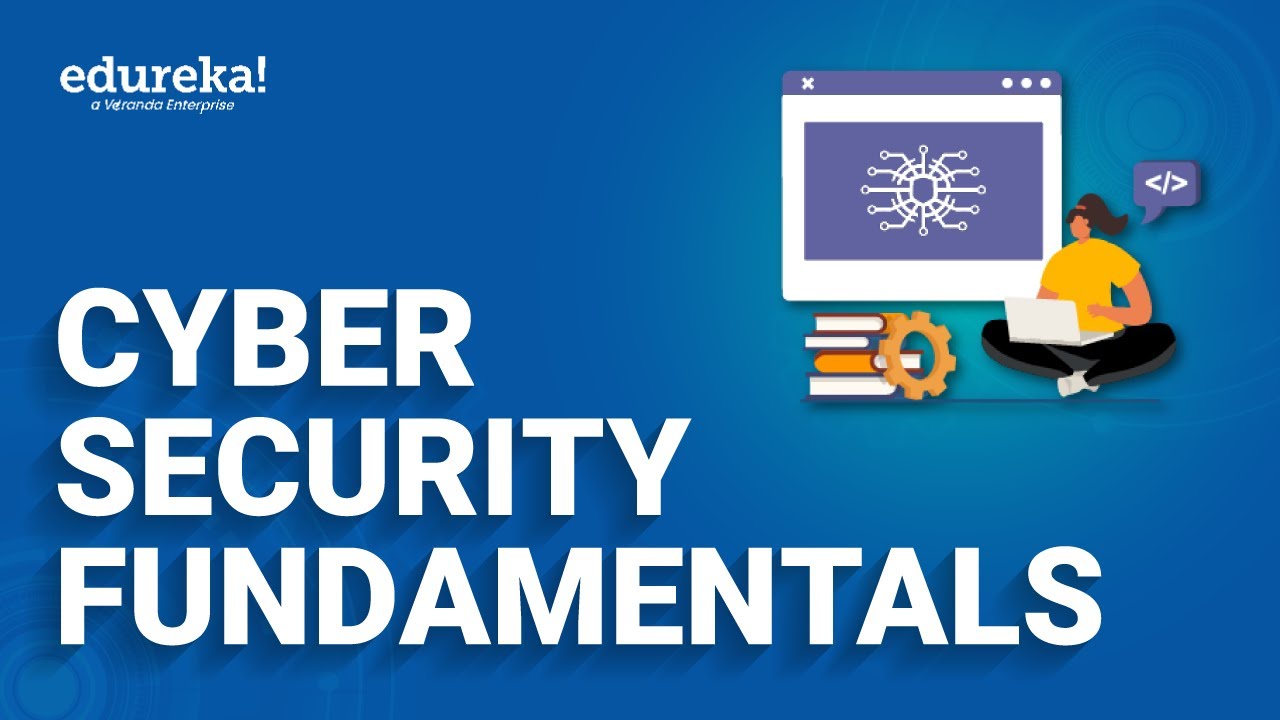Foundations - Part 01 - Prof. Saji K Mathew
Summary
TLDRThis cybersecurity and privacy course transcript introduces fundamental aspects of cybersecurity, emphasizing its role as an administrative issue that encompasses managing human, technological, and organizational resources. It discusses the McCumber cube and the CIA triangle (Confidentiality, Integrity, Availability) as core concepts, highlighting the importance of policy, education, and technology in ensuring information security. The script also touches on the human element of cybersecurity, including the need for information classification and the ethical considerations of data access and protection.
Takeaways
- 😀 Cybersecurity and privacy are foundational topics, with cybersecurity serving as an administrative issue focusing on the governance and management of organizational resources.
- 🔒 The course emphasizes the importance of frameworks and standards for cybersecurity management, highlighting the three-dimensional perspective of technology as a threat, asset, and protective tool.
- 📈 Cybersecurity challenges are evolving, and understanding the holistic concept of information security involves considering multiple dimensions, including network security, computer and data security, and management of information security.
- 📊 The McCumber cube (NSTI SSC security model) provides a comprehensive framework for understanding cybersecurity by considering computing dimensions, security objectives, and methods to ensure security.
- 🛡️ The CIA triangle is a fundamental concept in cybersecurity, representing the three core objectives: Confidentiality, Integrity, and Availability, which are essential for securing information in the cyber world.
- 🔐 Confidentiality ensures that information is accessible only to the intended recipients, preventing unauthorized access and maintaining privacy.
- 🔄 Integrity refers to the completeness and accuracy of data, ensuring that information is transmitted without alteration, damage, or loss.
- 🚀 Availability ensures that data is accessible when needed by the intended party, emphasizing the importance of system reliability and redundancy to prevent downtime.
- 🔑 Information classification is crucial for maintaining confidentiality, dictating who can access certain types of data within an organization.
- 🔗 The concept of data integrity is closely linked to data privacy rights, where individuals should have access to and the ability to update their personal information.
- 🌐 The script uses the example of the Aadhaar database to illustrate the importance of protecting personal biometric data and maintaining the confidentiality and integrity of such sensitive information.
Q & A
What is the main focus of the cybersecurity and privacy course?
-The main focus of the course is on cybersecurity as an administrative issue, emphasizing governance and management of organizations. It also explores the relationship between cybersecurity and data privacy.
How does the course view technology in the context of cybersecurity?
-The course views technology from three perspectives: as a source of threat, as an asset to be protected, and as a tool for protecting cyber assets.
What are the three major dimensions of information security discussed in the course?
-The three major dimensions of information security are network security, computer and data security, and the management of information security.
Why is policy important in cybersecurity management?
-Policy is important because it guides decisions related to cybersecurity investments and practices. It ensures that security measures align with the organization's goals and the criticality of its cyber assets.
What is the CIA triangle in cybersecurity?
-The CIA triangle refers to the three primary objectives of cybersecurity: Confidentiality, Integrity, and Availability. These objectives ensure that information is protected from unauthorized access, remains intact, and is accessible when needed.
What is the McCumber Cube, and how does it relate to cybersecurity?
-The McCumber Cube is a model that provides a holistic view of cybersecurity. It incorporates three dimensions: the roles of computing systems (storage, processing, transmission), the objectives of cybersecurity (confidentiality, integrity, availability), and the methods to ensure cybersecurity (policy, education, technology).
How does the course define confidentiality in the context of cybersecurity?
-Confidentiality ensures that information is accessed only by authorized recipients. It involves protecting data from unauthorized access and maintaining privacy through information classification and secure storage.
What does integrity mean in terms of cybersecurity?
-Integrity refers to the completeness and accuracy of data. It ensures that information remains unchanged during transmission and is protected from unauthorized alteration or deletion.
Why is availability important in cybersecurity?
-Availability ensures that information and resources are accessible to authorized users when needed. It is critical for maintaining business operations and relies on system reliability and redundancy.
How are confidentiality, integrity, and availability interrelated in cybersecurity?
-Confidentiality, integrity, and availability are interrelated as they collectively ensure the security of information. Confidentiality prevents unauthorized access, integrity maintains data accuracy, and availability ensures access to authorized users.
Outlines

This section is available to paid users only. Please upgrade to access this part.
Upgrade NowMindmap

This section is available to paid users only. Please upgrade to access this part.
Upgrade NowKeywords

This section is available to paid users only. Please upgrade to access this part.
Upgrade NowHighlights

This section is available to paid users only. Please upgrade to access this part.
Upgrade NowTranscripts

This section is available to paid users only. Please upgrade to access this part.
Upgrade NowBrowse More Related Video

Cybersecurity policy - Part 01 - Prof.Saji K Mathew

Cyber Security for beginners || Introduction to Cybersecurity

Discover How to Successfully Implement the NIST Cybersecurity Framework!

Introduction - Part 01 - Prof. Saji K Mathew

Cyber security fundamentals | Understanding Cybersecurity Basics | Edureka Rewind

Hong Kong’s new cybersecurity law: What businesses need to know
5.0 / 5 (0 votes)